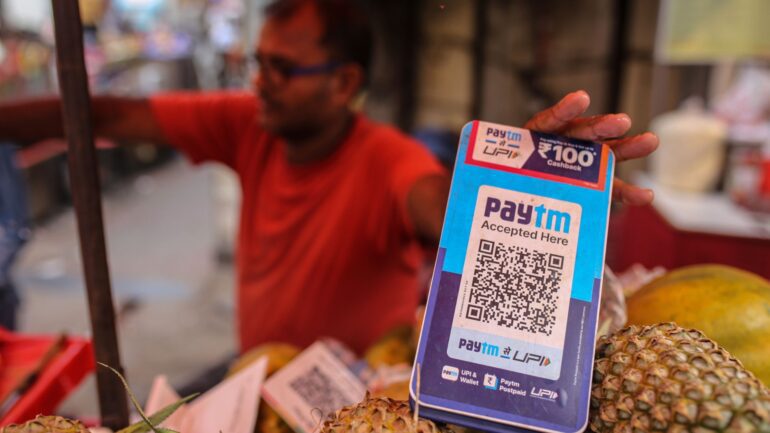TL;DR:
- India set to introduce voice-based and offline digital payment methods to bridge urban-rural divide.
- Universal Payments Interface (UPI) experienced remarkable growth, with 350 million users making 10 billion transactions in July.
- Reserve Bank of India (RBI) unveils “conversational” payments using AI-based speech recognition.
- Users can initiate transactions via voice commands, even offline, using “near field communication” technology.
- Open-source AI language tools from Indian Institute of Technology Madras to support multi-language expansion.
- Digital payments extend beyond major cities, attracting foreign investments and boosting financial inclusion.
- Challenges include limited internet access, low literacy rates, and data security concerns.
- Analysts caution against language complexities and unequal digital tool access.
- New Delhi’s data security bill aims to address data breach concerns.
Main AI News:
In a bold move to bolster its rapidly advancing digital landscape and bridge the gap between urban and rural sectors, India is set to introduce innovative methods of voice-enabled and offline digital payments. The burgeoning success of the Universal Payments Interface (UPI), a cutting-edge digital payments system, stands as a pivotal element in Prime Minister Narendra Modi’s grand vision of fortifying India’s digital infrastructure and seamlessly connecting the world’s most populous nation to the digital realm. Since its inception in 2016, UPI has sparked a digital payments revolution, boasting a user base of approximately 350 million individuals who leverage the platform for transactions, be it purchasing goods and services or conducting instantaneous money transfers. A staggering record of nearly 10 billion transactions was achieved in July alone, marking a remarkable surge of over 50 percent compared to the corresponding period last year.
However, the reach of UPI into India’s less affluent rural landscapes has been impeded by limited internet accessibility and lower literacy rates outside metropolitan regions. In a decisive bid to address this challenge, the Reserve Bank of India (RBI) recently unveiled an ingenious strategy for “conversational” payments. UPI users will soon be empowered to issue voice commands via their mobile phones, initiating transactions through AI-based speech recognition. This revolutionary service, built upon open-source AI language tools crafted by the esteemed Indian Institute of Technology Madras, is slated for an initial launch in English and Hindi, with plans for expansion to encompass additional languages. Remarkably, these transactions will be feasible without an active internet connection, thanks to the employment of “near field communication” technology – akin to the mechanism underpinning contactless card payments – that facilitates communication between closely situated phones. The RBI emphasized that this innovation will enable digital payments in retail scenarios where internet or telecom connectivity proves inadequate.
Dilip Asbe, the visionary at the helm of the National Payments Corporation of India, the government-backed entity steering UPI, affirmed that these transformative measures, slated for imminent introduction, will catalyze digital payments across regions beyond India’s metropolises, where growth has historically been concentrated. “What they do is help us to expand and create a new use case to reach out to more users and more merchants,” he asserted in a conversation with the Financial Times. The Indian government, under Modi’s leadership, has consistently championed cashless payments as a cornerstone of its digital infrastructure endeavor, encapsulated by the India Stack initiative. This comprehensive strategy aims to formally integrate the nation’s vast informal cash-driven economy into the structured financial system. The UPI ecosystem has not only supported this vision but has also played a pivotal role in attracting foreign investments, with prominent entities such as Google and Walmart-owned PhonePe developing highly popular payment applications.
India’s payment infrastructure has even found resonance on the international stage, with countries like Singapore and the United Arab Emirates assimilating aspects of India’s model into their own systems. Vijay Shekhar Sharma, the mastermind behind Indian payments giant Paytm, heralded the offline functionality of UPI as a potential “game changer.” Nonetheless, the ambitious plan is not without its challenges. Analysts underscore the alarming digital divide that still exists, with less than half of India’s population accessing the internet, as per the IMF and a mere 15 percent of rural households equipped with internet connectivity. Furthermore, India harbors the world’s largest cohort of illiterate adults, comprising approximately 300 million individuals.
Dilip Asbe openly acknowledged the uphill battle in bridging this divide. “But it can create value in the long run,” he asserted with determination. Civil society advocates, however, raise concerns that the rapid growth of India’s digital infrastructure has outpaced safeguards for user data, resulting in a series of high-profile data breaches. Responding to these apprehensions, New Delhi recently passed a groundbreaking personal data security bill, although critics contend that its provisions for privacy protection fall short of expectations. Jayanth Kolla, co-founder of tech consultancy Convergence Catalyst, offered a cautionary perspective, highlighting the intricacies of making the voice command function scalable across India’s diverse linguistic landscape. “For the system to recognize and function seamlessly across the expanse of the country could pose a challenge,” he deliberated.
Conclusion:
The ambitious introduction of voice-enabled and offline digital payments in India marks a strategic step toward overcoming digital disparities and fostering financial inclusion. By leveraging AI-based technology and innovative approaches, this initiative has the potential to reshape the country’s payment landscape, expanding access to underserved regions and stimulating foreign investments. However, the road ahead is not without challenges, as bridging linguistic diversity, ensuring data security, and addressing access inequalities will be pivotal to realizing the full potential of this transformation.

